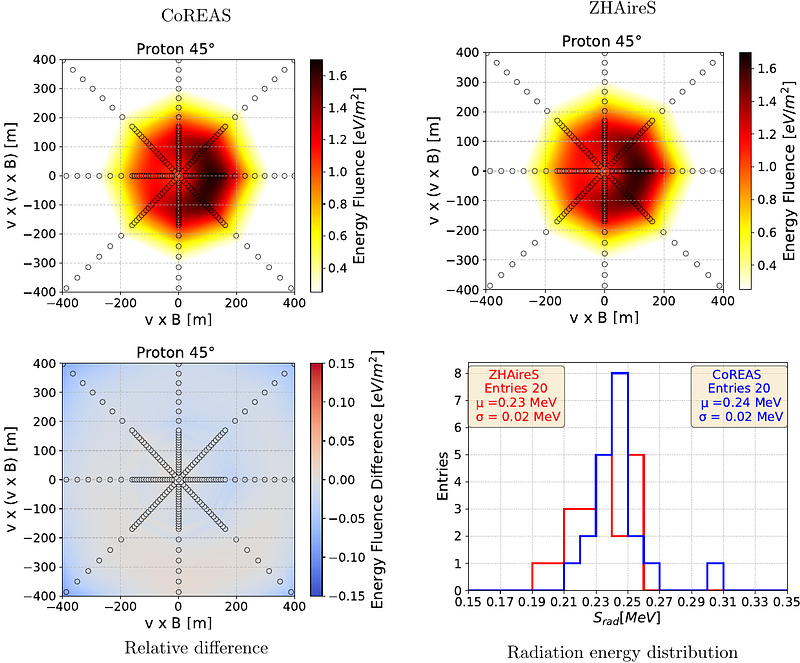Uncertainties in the Estimation of Air Shower Observables from Monte Carlo Simulation of Radio Emission

Uncertainties in the Estimation of Air Shower Observables from Monte Carlo Simulation of Radio Emission
Carlo S. Cruz Sanchez, Patricia M. Hansen, Matias Tueros, Jaime Alvarez-Muñiz, Diego G. Melo
AbstractThe detection of extensive air showers (EAS) induced by cosmic rays via radio signals has undergone significant advancements in the last two decades. Numerous ultra-high energy cosmic ray experiments routinely capture radio pulses in the MHz to GHz frequency range emitted by EAS. The Monte Carlo simulation of these radio pulses is crucial to enable an accurate reconstruction of the primary cosmic ray energy and to infer the composition of the primary particles. In this work, a comprehensive comparison of the predicted electric field in EAS simulated with CoREAS and ZHAireS was conducted to estimate the systematic uncertainties arising from the use of different simulation packages in the determination of two key shower observables namely, the electromagnetic energy of the EAS and the depth of maximum development ($X_{\rm max}$). For this comparison, input parameters and settings as similar as possible were used in both simulations, along with the same realistic atmospheric refractive index depending on altitude, which is crucial for the prediction of radio emission properties of EAS. In addition, simulated EAS with very similar values of depth of maximum development were selected. Good agreement was found between CoREAS and ZHAireS, with discrepancies in the dominant electric field components generally remaining below $10\%$ across the frequency range of a few MHz to hundreds of MHz, relevant for most radio detection experiments, translating into uncertainties in the determination of energy below $5\%$ and $\simeq 10\,\mathrm{g/cm^2}$ in $X_{\rm max}$.